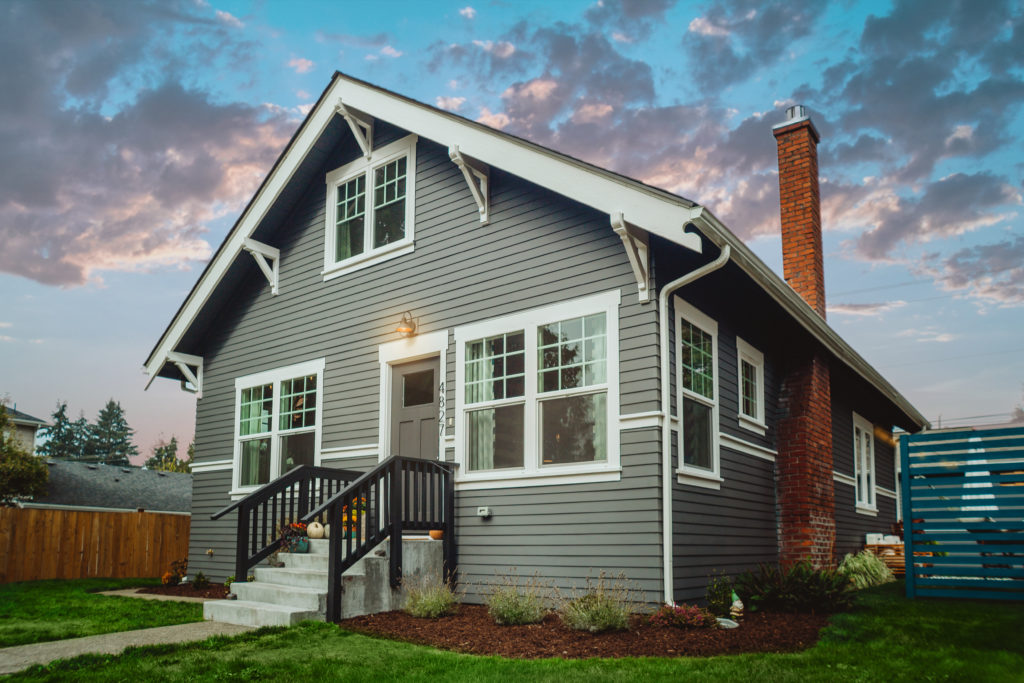6.21.21
What to Know About Buying a Rent-to-Own House


Consumers home loans
We’d love to help you with a mortgage or home equity line of credit.
Learn moreThe pros and cons of a rent-to-own agreement.
Rent-to-own can sound like a great path to homeownership if you don’t qualify for a traditional mortgage. However, this type of deal is very different than a standard home purchase and poses some risks for the buyer. Here are the basics of rent-to-own home purchases.
How do rent-to-own contracts work?
Rent-to-own lease agreements generally run one to five years. During the lease period, a portion of the monthly rent is allocated for the future purchase of the home. There are two types of contracts used in rent-to-own transactions: lease-option and lease-purchase.
A lease-option gives you more choice because you can decide not to buy the home. You rent the home and have a right, but not an obligation, to buy the home at a time specified in the contract.
A lease-purchase is a bigger commitment; you’re legally obligated to purchase the home at the end of the lease period at a certain price. The renter/buyer either pays cash for the property or gets a home mortgage to finance the purchase.
Setting the purchase price
One key element of a rent-to-own agreement is the purchase price at future date. Depending on the market, this could work for or against you. In a housing market where prices are going up rapidly, the agreement locks in a price at current market value. If prices depreciate however, you’re stuck with the price if you’re in a lease-purchase agreement.
Expect higher monthly payments
In a rent-to-own transaction, your monthly payment covers both rent and a set amount that is credited toward a future purchase. This means your monthly payment will likely be 25% to 30% higher than standard rent or a conventional mortgage.
Whether you decide to buy or not, the landlord/seller keeps 100% of the monthly payments.
Do your research to see what fair market rents are in the area where you want to rent-to-own. Also, make sure you understand exactly how much of each payment goes toward a purchase credit. Upon doing the math, you might find that you could save more on your own and waiting to buy.
The upfront fee
Generally, the renter/buyer pays a one-time, non-refundable option fee at the start of the rent-to own agreement. If you decide to buy the home, the option fee is applied to the purchase price. Expect a fee between 1% and 5% of the purchase price when negotiations are complete.
Get your own legal counsel
When you sign a rent-to-own contract you are legally bound by its terms. To make sure you’re clear about what you’re getting into, it’s a good idea to consult with a real estate attorney to help you understand the terms, the rights you and the seller have, as well as any obligations.
Who pays for upkeep and repairs?
While renting the home, make sure you know who’s responsible for repairs and get it in writing.
It’s not unusual for sellers to require renters to keep up the property under rent-to-own agreements. However, the specifics of the requirements could vary from simply keeping up the lawn to covering repairs like leaky faucets or broken HVAC systems.
If you’re responsible for repairs, get a home inspection to assess the condition of the home. If the home is still desirable upon receiving the inspector’s report, verify that your budget has room for the possible added expenses.
Pay on time and follow the rules
Failing to pay rent on time or breaking rules, such as having a dog when the contract states no pets allowed, can nullify the agreement and any funds paid toward purchase price are lost.
Be cautious
Rent-to-own agreements have helped many people become homeowners, but buyers should beware. There are people who take advantage of others through rent-to-own schemes.
Some real-life examples of the ways sellers have misrepresented rent-to-own home deals are:
- They don’t own the house and therefore can’t legally sell it.
- They fail to pay the property taxes and leave the buyer on the hook for unpaid taxes, potentially several years’ worth.
- They don’t make good on promises to make repairs after the contract is signed.
- They fail to make their mortgage payments and the house goes into foreclosure.
To protect your interests, learn as much as you can about the seller, get an inspection and consult with an attorney before signing a contract.
Making the purchase
If you decide to purchase the home at lease-end, you’ll have two options. Pay cash or get a conventional home loan.
Keep in mind that the extra payments you make during the lease period go to the seller and are credited to the purchase price. They are not considered a down payment when you seek a loan. When you work with a lender to finance the purchase, in most cases, you’ll need a down payment.
If you agree to a lease-purchase agreement, make sure that you’ll be able qualify for financing at the end of the lease period.
Consumers helps thousands of members finance land, first and second homes, and home improvement projects each year. We’d love to help you with a mortgage or home equity line of credit; contact us online or call us at 800-991-2221.
![]()

Consumers home loans
We’d love to help you with a mortgage or home equity line of credit.
Learn more


Thank you God I saw this! Now I know this is not for us! Like my head hurts! I was just talking to someone today about getting started with this process. I think I just dodged a bullet!
We are happy this helped!